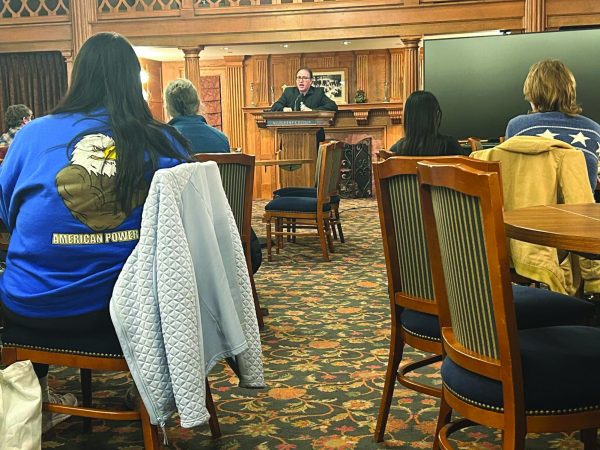Local service, national issue: overdose
A Day of Remembrance memorial service was held at New Beginnings Church of God on Sunday, Jan. 29, in order to remember those who have passed away due to overdose.
The memorial service provided an opportunity for those who have lost a loved one to overdose to come together and grieve.
The Stepping Stones Unit of Meadville Medical Center offers treatment for drug and alcohol abuse. Department Head Kenlo McGowan helped plan the service that was led by Chaplain Julie Kolacz.
About 25 people attended the service. A moment of silence was held to remember lost loved ones. During the moment of silence, Kolacz tapped a cymbal in order to commemorate those who died due to overdose in Crawford County over the past year. The service was brought to a close with a candle lighting.
“The light could represent the light of hope, the light of recovery or the light of Christ,” said Kolacz.
The purpose of the service was to offer a safe space for those grieving to come together as well as let the community know that addiction and drug overdose is a public concern, according to Kolacz.
“There’s always hope,” Kolacz said. “Don’t give up on being able to overcome the disease.”
Kolacz said that the service provided an enviornment for people to grieve together.
“You find a new normal,” Kolacz said. “Don’t grieve in silence.”
Stationed in Denver, Colorado, the National Association of Addiction Treatment Providers was formed in 1978. The NAATP is a national professional membership society for addiction treatment providers. Its branches, which include about 600 addiction treatment campuses around the United States, provide addiction treatment.
“Our job here at NAATP is to bring the field together in order to promote best practice,” NAATP Executive Director Marvin Ventrell said. “We want to make sure that people who practice addiction service are providing good care, and also, we want to make it as available as possible.”
The NAATP engages in public policy at an office stationed in the District of Columbia that works on legislation pertaining to addiction care.
“Addiction is sort of the common sense term, but the technical name is SUD, substance use disorder,” Ventrell said. “The most common substance that causes substance use disorder, by far, is alcohol.”
Ventrell discredited the stereotype that surrounds addicts as being criminals.
“The reality is that addiction is a chronic brain disease,” Ventrell said. “There’s no medical or psychological debate about that. That means that something has happened in the brain which causes the individual to not be able to avoid substance. The hierarchy of need in an addict’s brain is replaced, so the substance becomes a paramount concern.”
Ventrell said that people who are addicted to a substance become prone to making bad decisions, which is where the criminal and social maladjustment stereotypes stem from.
“It’s important to think of addiction as having multiple components,” Ventrell said. “It is biological, psychological, social and spiritual.”
Ventrell said that if all components are addressed during treatment, people recover.
“The stigma of addiction is wrong,” Ventrell said. “In order for our country to respond to it well, we have to recognize that because addiction touches all races, belief systems, genders, all people who have a tendency to suffer, or simply are too exposed, so that it takes root.”
The Day of Remembrance service was held because addiction is a concern according to Kolacz.
The Crawford County Drug and Alcohol Executive Commission, Inc. provides drug and alcohol prevention services and assists with the recovery process.
“While opiates get a lot of attention, alcohol is still the number one drug that people seek treatment for, and marijuana is pretty high too,” CCDAEC Prevention Supervisor Jayme Ferry said. “Our main drug currently that we’re concerned about it being life threatening are the opiates.”
Ferry said that anyone can become an addict.
“What a lot of people don’t realize is that the face of addiction has significantly changed,” said Ferry. “People have this stereotypical picture of what an addict looks like which is not really accurate to begin with, especially with the opiates and the prescription opiates.”
Ferry said that people can be getting prescription pain medicine from their doctor or dentists and then become addicted and dependant on those drugs.
“It happens in a fairly short period of time,” Ferry said. “Once you become physically dependant on it, sometimes people continue along that progression in the addictive process where they start using it because they just don’t want to be sick from the withdrawal symptoms.”
Ferry said that there has been a huge increase in opiate use, abuse, addiction and overdose in the Meadville and Crawford County areas. She said that many overdoses are a result of people using more than one kind of drug paired with alcohol or other substances. She said that people do not really understand the strength of the medication.
The CCDAEC provides outpatient, inpatient, detoxification and hospital care treatment.
“You can get help,” Ferry said. “We’re responsible for making sure people don’t fall through the cracks.”







